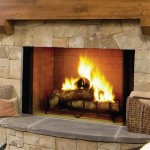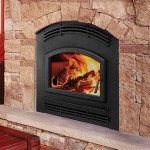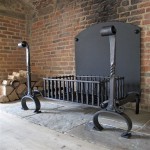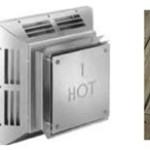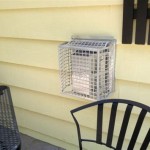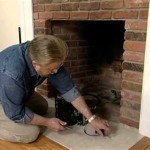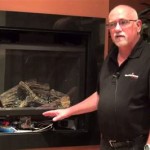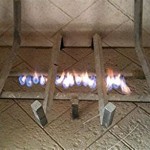Understanding Gas Valve Fireplaces: Operation, Maintenance, and Safety
Gas valve fireplaces represent a convenient and popular heating option for many homes. They offer the ambiance of a traditional fireplace without the complexities and mess associated with burning wood. Understanding the inner workings of a gas valve fireplace, proper maintenance procedures, and critical safety precautions are essential for homeowners to ensure efficient operation and, above all, safety. The core component of such a fireplace is, undoubtedly, the gas valve itself, controlling the fuel supply and combustion process.
These fireplaces utilize natural gas or propane as their fuel source. The fuel is delivered through a gas line to the fireplace's gas valve. This valve regulates the flow of gas to the burner, where it mixes with air and ignites, creating flames. Modern gas valve fireplaces are designed with safety features, including flame sensors and automatic shut-off mechanisms, to prevent gas leaks and ensure safe operation. Unlike wood-burning fireplaces, gas fireplaces offer convenient on/off switching and adjustable flame heights, providing greater control over heat output and energy consumption.
The installation of a gas valve fireplace should always be performed by a qualified and licensed technician. Proper installation is paramount for safety and efficient operation. The technician will ensure that the gas line is correctly connected, the venting is adequate, and the fireplace meets all local building codes and safety regulations. Incorrect installation can lead to gas leaks, carbon monoxide poisoning, and fire hazards. A professional installation also includes testing and calibration of the gas valve to ensure proper gas flow and combustion. This is essential for achieving optimal heating performance and minimizing energy waste.
Key Point 1: Operation and Components of a Gas Valve Fireplace
The operation of a gas valve fireplace is relatively straightforward, but understanding the components involved is crucial for troubleshooting potential issues. The main components include the gas valve, burner, pilot light assembly (or electronic ignition), thermocouple or thermopile, and vent system.
The gas valve acts as the central control unit, regulating the flow of gas based on input from the thermostat or manual control. It's typically a multi-stage valve, allowing for different flame heights and heat outputs. The burner distributes the gas evenly to create a consistent flame pattern. Burners are typically constructed of durable materials such as stainless steel or cast iron to withstand high temperatures and corrosion.
The pilot light assembly (or electronic ignition system) is responsible for igniting the gas. Older models rely on a continuously burning pilot light, while newer models utilize electronic ignition, which sparks to ignite the gas only when the fireplace is turned on. Electronic ignition systems are more energy-efficient as they eliminate the need for a constantly burning pilot light. The thermocouple or thermopile is a safety device that senses the presence of the pilot light flame (in pilot light models). If the pilot light goes out, the thermocouple cools down and shuts off the gas supply to prevent a gas leak. In electronic ignition systems, a flame sensor fulfills a similar role.
Finally, the vent system removes combustion byproducts, such as carbon dioxide and water vapor, from the fireplace and safely exhausts them outdoors. Proper venting is critical for preventing carbon monoxide poisoning. There are two main types of venting systems: natural vent and direct vent. Natural vent systems rely on natural convection to exhaust gases, while direct vent systems use a sealed system with two pipes – one for intake air and one for exhaust.
Key Point 2: Essential Maintenance Procedures for Gas Valve Fireplaces
Regular maintenance is vital for ensuring the safe and efficient operation of a gas valve fireplace. Neglecting maintenance can lead to performance issues, safety hazards, and costly repairs. The maintenance schedule should include annual inspections by a qualified technician and regular cleaning by the homeowner.
Annual inspections should include a thorough examination of the gas valve, burner, pilot light assembly (or electronic ignition), thermocouple or thermopile (or flame sensor), vent system, and gas line connections. The technician will check for any signs of wear and tear, corrosion, or leaks. They will also clean the burner and pilot light assembly to ensure proper combustion. The vent system should be inspected for blockages or damage. Finally, the technician will test the safety features of the fireplace, such as the automatic shut-off mechanism, to ensure they are functioning correctly.
Homeowners can perform regular cleaning tasks to maintain their gas valve fireplace. This includes cleaning the glass front with a non-abrasive cleaner to remove soot and dust. The area around the fireplace should also be kept clear of flammable materials, such as curtains and furniture. It is important to consult the manufacturer's instructions for specific cleaning recommendations for the fireplace model.
During the cleaning process, it's useful to visually inspect the components. Look for signs of rust or corrosion, especially near the burner and gas valve. Check the condition of the artificial logs or stones; if they're crumbling or damaged, they may need replacement. Ensure the vents are clear of debris. A simple check is to visually confirm that the flame pattern is consistent and blue, indicating efficient combustion. Yellow or orange flames can indicate incomplete combustion, which may require professional attention.
Key Point 3: Safety Precautions and Troubleshooting Common Issues
Safety should always be the top priority when operating and maintaining a gas valve fireplace. Homeowners should be aware of the potential hazards associated with gas appliances and take necessary precautions to prevent accidents. The most critical safety precaution is to install and maintain a working carbon monoxide detector. Carbon monoxide is a colorless, odorless gas that can be deadly. The detector should be placed near the fireplace and tested regularly.
Never attempt to repair or modify a gas valve fireplace unless you are a qualified technician. Gas appliances require specialized knowledge and tools to be serviced safely. If you suspect a gas leak, immediately evacuate the premises and contact your local gas company or fire department. Do not use any electrical devices or light matches, as this could ignite the gas.
Common issues encountered with gas valve fireplaces include pilot light problems, burner malfunctions, and vent blockages. If the pilot light won't stay lit, it could be due to a faulty thermocouple or thermopile, a dirty pilot light assembly, or a low gas pressure. A burner malfunction can manifest as uneven flames, a yellow or orange flame color, or a hissing sound. This could be caused by a dirty burner, a blocked gas orifice, or a faulty gas valve. A vent blockage can prevent proper exhaust of combustion gases, leading to carbon monoxide buildup. Regular inspection and cleaning of the vent system can prevent this issue.
If the fireplace is producing a strong odor of gas, immediately shut off the gas supply to the fireplace and contact a qualified technician. Do not attempt to use the fireplace until the leak has been repaired. Similarly, if the fireplace is producing excessive soot or smoke, it could indicate a problem with the venting system or incomplete combustion. In this case, the fireplace should be shut down and inspected by a professional.
Homeowners should familiarize themselves with the emergency shut-off valve for the gas supply to the fireplace. This valve is typically located near the fireplace or at the gas meter. In the event of a gas leak or other emergency, knowing how to quickly shut off the gas supply can prevent further damage or injury. It's also prudent to have the fireplace and venting system inspected after any significant event, such as an earthquake.
In conclusion, gas valve fireplaces offer a convenient and aesthetically pleasing heating solution, but responsible ownership necessitates a thorough understanding of their operation, diligent maintenance practices, and unwavering adherence to safety protocols. Only through a combination of informed operation and professional servicing can homeowners enjoy the benefits of a gas valve fireplace safely and efficiently.

Dante Cp Bvs2 Br B 3 4 Inch Quarter Turn Straight Gas Ball Valve Kit Brass

Pro Flex Hearth Master Valve Kit Straight Brushed Nickel Finish Key And In The Gas Fireplace Log Accessories Department At Com

Sit 820 Series Millivolt Fireplace Valve 225 Degree 30 Turndown Natur Fire Parts Com

Gas Valve Kits Fireplace Kit Complete

Pro Flex Hearth Master Valve Kit Angle Black Finish Key And In The Gas Fireplace Log Accessories Department At Com

Blue Flame Angle Gas Valve Kit Included Brass Floor Plate And Key In Polished Chrome Bf A Pc Hd The Home Depot

Replacing A Gas Ball Valve To Your Fireplace

Your Guide To Gas Log Valves Controls Woodlanddirect Com

Key Style Gas Valve For Fire Pits Or Fireplaces

Dante Globe Gas Valve Key And Floor Plate Kit Straight Polished Brass Finish

